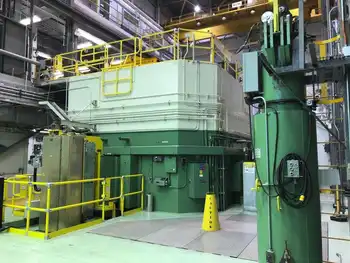Finally, a plan to use Torontos biogas
By Toronto Star
NFPA 70e Training - Arc Flash
Our customized live online or in‑person group training can be delivered to your staff at your location.

- Live Online
- 6 hours Instructor-led
- Group Training Available
The visit had a lingering effect on me – literally. I toured the stations anaerobic digester facility, which shreds up all our rotting food, dog poop, baby diapers and other digestibles and converts it into inert compost. It was an impressive operation, even though there were some technical kinks to work out.
The drive home after was horrible. I couldnt stand the smell of myself, so I drove on the 401 Highway with the window open during a latesummer rainstorm. Even my pen and notepad stank and had to be thrown out, along with my running shoes.
I remember writing in my notes, however, that the facility produced a steady flow of methane, a byproduct of all the muckeating microorganisms that are used to digest the organic material. The methane was being flared to reduce its potency as a greenhouse gas. Facility staff, however, said the city was looking at ways of harnessing the gas and using it as renewable fuel.
The bad news is that not much has changed. The Dufferin facility still flares its methane, which means a perfectly good source of renewable fuel has been wasted over the years. The good news is that the citys solid waste management department now has a plan to capture and use this biogas.
Geoff Rathbone, the departments general manager, hinted at this vision during a presentation to the citys public works committee.
More detail will be revealed at the committees next meeting on May 18, when Rathbone will explain how the citys two green bin processing plants – the existing Dufferin facility and a new one to be built at the Disco Transfer Station – will be engineered to capture the methane and clean it up so that quality is high enough to displace conventional natural gas.
Wed then put it into the natural gas grid in cooperation with Enbridge, then wed utilize the gas either in city buildings or by converting our solid waste fleet from diesel to natural gas, Rathbone explained to me in an email.
Under the first scenario, city buildings would still get regular natural gas from Enbridge, but the amount used would be offset by the renewable biogas injected into Enbridges pipeline network from the Dufferin and Disco locations. It would allow the city to legitimately claim that its buildings are heated with green gas.
The second scenario is even more attractive, as Rathbone figures enough biogas could be produced to fuel the citys entire fleet of 285 wastehauling trucks.
We will be getting our first natural gas waste truck this year to begin to pilot its operational capabilities, he wrote. So by the time our green bin facilities are producing refined natural gas from biogas, well be in a position to make a decision on the best way to go.
Moving that many trucks from diesel to natural gas would reduce the citys greenhousegas emissions by 13,000 tonnes a year, which is roughly equivalent to taking 4,000 cars off the road.
I asked Rathbone why the city wouldnt use the biogas to generate electricity under the provinces feedintariff FIT program, which pays out 10.4 to 14.7 cents per kilowatthour depending on the size system. Under the FIT program, the Ontario Power Authority has already issued contracts for about 22 megawatts of biogasbased power generation, and at least another 12 megawatts worth of projects are awaiting approvals.
Rathbone would say only that the refining and use of the biogas directly would be optimal, and that more detail would come May 18. The city, however, will be generating electricity using methane collected from its Green Lane landfill in London.
That plan involves tapping landfill gas at Green Lane that is currently flared. Instead, it would be collected and piped seven kilometres south to a sixhectare greenhouse facility operated by Ontario Plants Propagation Ltd. OPPL.
Toronto Hydro Energy Services would build a 10megawatt cogeneration plant on OPPLs property that runs on the landfill gas. Electricity from the plant would be sold under the FIT program into the grid. Heat produced as a byproduct of electricity generation would be used by OPPL in its greenhouse to assists in yearround vegetable growing.
Construction could start late this year, with the cogeneration facility beginning operation in summer 2013. Over time, as the volume of landfill gas from the site increases, theres an option to build another sixmegawatt cogeneration plant.
The city figures that annual CO2 reductions would be roughly 19,000 tonnes, equivalent to taking 5,750 cars off the road. It would get royalty payments of about $1.5 million a year for supplying the landfill gas.
Toronto Hydro, it should be noted, has at least one other major biogas project in the works in partnership with the city. Poop, toilet paper and other organics flushed into our sewer system emit methane, so the centuryold Ashbridges Bay Wastewater Treatment Plant plans to pipe that methane to a 10megawatt cogeneration plant built and operated by Toronto Hydro.
The Ashbridges facility would use waste heat from the generator to replace its use of natural gas. This project, the citys green bin and landfill projects, and dozens of other initiatives approved under the provinces FIT program or soon to be approved are proof that green energy – not to mention the provinces green energy strategyisnt just about wind and solar.
Together, these projects represent the equivalent of nearly 100 megawatts of renewable power that doesnt have to come from coal, or natural gas or diesel fuel. Its energy that can be stored and delivered when we need it, andperhaps whats most encouraging – were just getting started.











